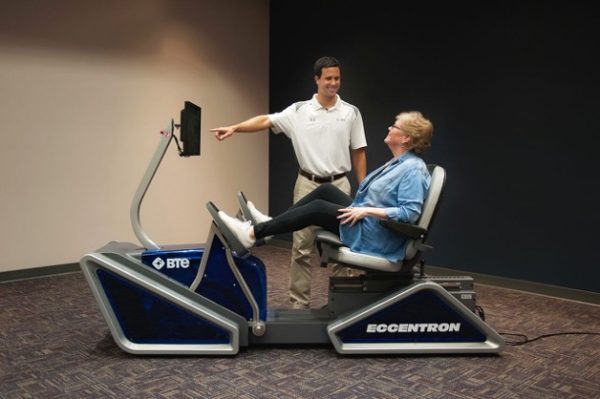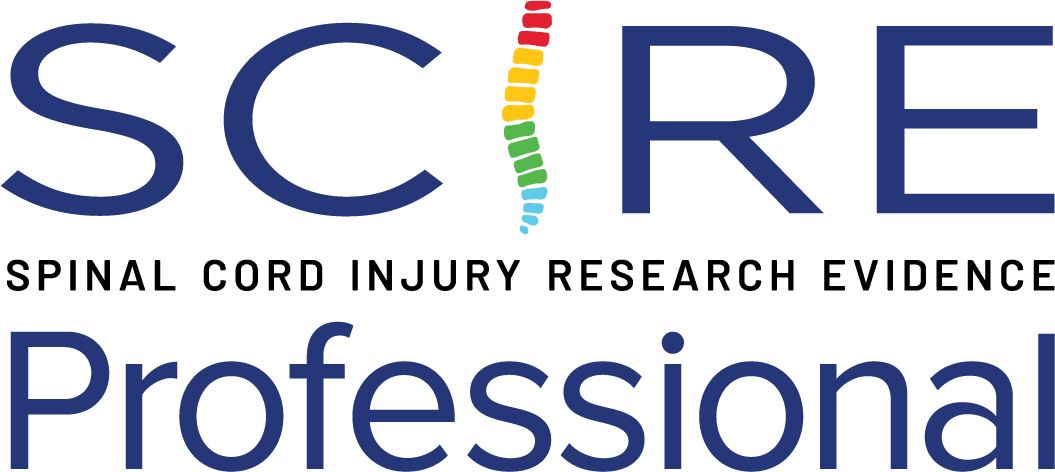Eccentric Resistance Exercise Using the Eccentron
The Eccentron (BTETech, Hanover, MD, USA; see figure 6 is a motor driven eccentric stepper; and could be an ideal modality for those with incomplete SCI (Stone et al. 2019). Originally designed to train older adults, athletes, or those who have had cardiopulmonary complications, the Eccentron delivers a controlled and measurable negative muscular overload (Stone et al. 2019). Training on the Eccentron allows a person with incomplete SCI to bilaterally work the limbs and visually track the accuracy of force production during repetitions (Stone et al. 2019). The Eccentron may assist in concurrently improving lower extremity muscle strength and reciprocal limb activation, both of which may improve ambulatory function (Stone et al. 2019).

Figure 6. The Eccentron. From www.btetechnologies.com
Discussion
Stone et al. (2019) assessed 11 participants with chronic SCI who performed an eccentric resistance training program for 12 weeks. For the training program, an eccentrically biased recumbent stepper (i.e., Eccentron, which targets the gluteal, hamstring, and quadriceps muscles) was used for training twice a week, with an intensity of 50% one-repetition maximum and a dosage of 2-3 sets of 8 repetitions at 12 rpm (Stone et al. 2019; Stone et al. 2018). Participants significantly improved their walking speed (10MWT), walking ability (WISCI II) and standing balance (TUG test) from baseline to 6 weeks to 12 weeks post-training (Stone et al. 2019). It should be noted that the improvement in 10MWT performance across the intervention was positively correlated with the change identified in daily step physical activity (Stone et al. 2019). Lower limb eccentric and isometric strength also improved; however, daily step physical activity remained unchanged (Stone et al. 2018).
Conclusions
There is level 4 evidence (from 1 pre-post study: Stone et al. 2019) that an eccentric resistance training program for the lower limbs, using the Eccentron device, performed twice a week for 12 weeks with an intensity of 50% one-repetition maximum improves standing balance, walking speed, walking ability, and isometric and eccentric strength, but not daily step physical activity on participants with chronic SCI.
